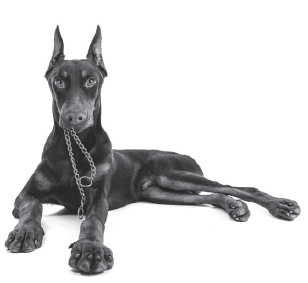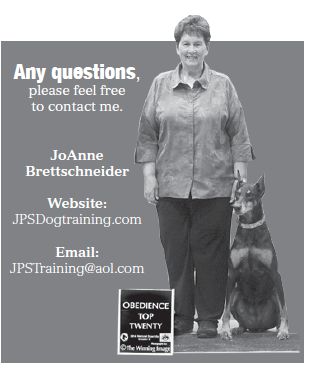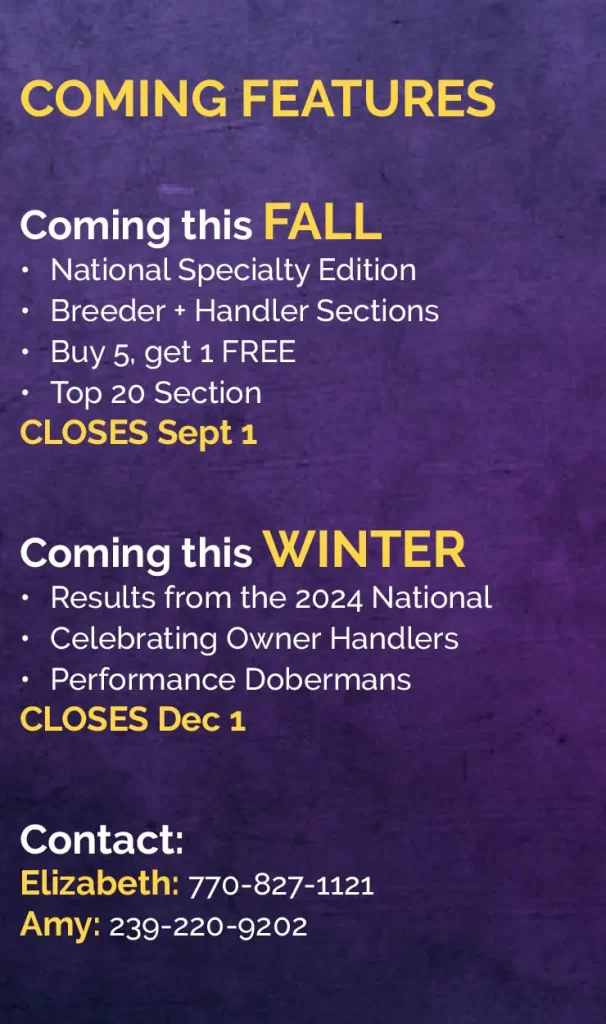JoAnne’s Workshop: Space Issues
Posted on October 5, 2018

This month I would like to address pushy dogs and space issues.
How many of the following apply to you and your dog?
- He charges through doors before you even open them?
- While running around the yard with a toy and not looking, he plows into you or your other dogs?
- He jumps on you with enough force to knock you off your feet?
- While you are playing tug, he grabs for the toy and connects with your hand? (No, it wasn’t an accident)
- With you holding the leash to meet another dog, he has front feet high in the air, rearing up like a horse in order to try his best to get to the other dog?
- On that obedience recall, he slides into you, unable to stop and crashes into your body? (Oh, he didn’t mean it, he was excited.)
How Many times have you been head butted by your dog?
- Have you praised your dog as he jumps into the air, shoving his nose into your face hard enough to draw blood
- Have you reached for a toy, only to have your dog get it first, jumping up and both of your heads collide?
How many other problems can you think of that can easily be defined as spacial issues? (Many aggression issues are space issues as well, such as resource guarding of food or toys.)
A dog that respects your space will not bite you, crash into you, or jump on you. He will not head butt your elderly dog. He will not take out your Aunt Tillie when she walks into your house, nor will he pin poor Aunt Tillie against the wall, kissing her face while his 75 pounds holds her hostage.
In the 1970s, I had a Doberman that was coming so lovingly towards me to be petted as I stood next to my bed, or was she? I was mistaken, she was coming to jump on the bed! As I reached to pet her, she jumped, and her skull collided with my nose. I saw stars like never before. My nose was broken, and I had an aversion to anything getting close to my face for a VERY long time. To this day, if I reach down to pet a dog my hand will go in the collar of that dog. No collar, I have my hands in a way that I can block the dog should he jump.
I do need to explain one thing before I dive into how to fix or manage this type of behavior. Pushy and even dominant behavior is NOT aggression. It can be, but more times than not, it is just a learned behavior that we allow. Aggression is either genetic, or created by a set of circumstances. Conversely, pushy behavior is what we allow to happen because what our pushy dog does, doesn’t really bother us. That is… until it interferes with our plans or it causes unexpected injury.
Some think that defining boundaries will stop dominant or aggressive tendencies. How often do you hear that your dog should not sleep in bed with you if he is dominant? Spacial control means when your dog is in bed, and you climb in, he will move to accommodate you. He will not growl, or refuse to move when you ask. Simply not allowing him in bed does not fix or control the problem. Some of the pushiest dogs are some of the most loving, happy, friendly dogs I have ever known. Perhaps it is because we tend to overlook what these dogs are doing because they are so loving and happy. They get so excited to see us, that they bang into us with force. I have heard people say that their dogs don’t realize how strong they are. Then TEACH them. The first rule of thumb to quit making excuses for your dog! Quit saying he didn’t mean it when he “accidentally” made you bleed because he was grabbing at a toy or a treat.
If you don’t care if your 70 or 80 pound dog flies from across the front room to jump into your lap and kiss you, then I am sure it is what you have chosen to live with. But if you tell me that your dog is running around the back yard with his brother or sister, and plowed into you, knocked you down and broke your arm, then I would think you should start to care.
Beginning with a puppy of about 10 to 12 weeks, I teach that jumping is not acceptable. I simply teach the puppy to back up, using “move” or “lookout” as I move into his space. When he starts to move out of my space, I reward. I do this slowly, as puppies don’t have the balance that an older dog would have, but regardless, I shuffle him out of my space. As he learns, I will move into his space, shuffling into him from the front, then also from the side. When he moves at all he gets rewarded. As he gets older, I move into his space more aggressively. This is not kneeing him or correcting him, just moving into his space. My “lookouts” get a bit louder, and I move quicker. Soon, as I come into his space, he will willingly move out of it to accommodate me. This will continue as I go through doors, get into the car, or even when Aunt Tillie comes over, I will move in front of her and move my dog out of her space.
Something to think about: If you ask your dog to “wait” as you open the door and he doesn’t, what do you do? If on a leash, do you correct him? Or do you grab his collar and drag him back inside so you can repeat the “wait” command several times? Does it work? If your dog has to wait for a command every time he is to not charge through a door, then how does he learn not to charge through the door? He doesn’t. He learns to wait for your command, and he is performing a task you asked him to do. This does not teach him to respect your space.
 Try this if you dare. With your dog on a leash, open the door, and as you begin to open, he will begin to go through. You have NOT told him to wait or sit or anything. As he begins to bulldoze through, use your leg if you can to block him from going through, and back him up with a “lookout” for about 6 feet. As you come towards the door again, turn into him as you reach for the door. After a few times, when you reach for the door, he should back up. This will work better than 100 commands to “wait”.
Try this if you dare. With your dog on a leash, open the door, and as you begin to open, he will begin to go through. You have NOT told him to wait or sit or anything. As he begins to bulldoze through, use your leg if you can to block him from going through, and back him up with a “lookout” for about 6 feet. As you come towards the door again, turn into him as you reach for the door. After a few times, when you reach for the door, he should back up. This will work better than 100 commands to “wait”.
How do I manage the dog in the back yard with a run by and knocking into me? The dog must understand the “lookout” command. So, as the dog lopes by you, raise your knee a millisecond before he gets to you and tell him to lookout. Did he run into your knee? Oops. Next time he is running at you, move towards him with intent to get him to move. Teach your dog that your space is to not be invaded unless you invite him into it.
If you have a dog that bludgeons into you on a recall, as he gets about 6 feet from you, step forward quickly with a “lookout”. This should cause him to stop in his tracks and try to jump out of your way. As he does this, then allow him to come into his proper position with a bit of motion and encouragement. Just a quick note, be careful not to make your dog think he is not to do the front, or you will have a dog that stops short and does not complete the recall. The recall is actually two parts, the call, and the front.
If your dog tries to dive onto another dog, back him up until he stops trying, then give him a release when he is no longer pulling and diving to the other dog.
How about that toy? I have a very loud vocal “OUCH” that will resound 5 miles if my dog’s teeth meet my skin. I don’t like it and I don’t allow it, even in play. What I do for this is to take a braided toy that has some length to it, and my hands are both on the toy, with an opening just wide enough for my dog to get his mouth on. I start close and tell him to “get it”. If he is not careful, my hand pushes towards his open mouth, quickly. I keep telling him to “get it” and he ends up trying really hard to get his mouth on that toy without connecting with my skin. This is probably better demonstrated in person. This is NOT a punch, it is a push. If he does not take my lead, and bites my hand, I holler “Ouch” and just simply continue. When he is careful to not get my hand when he takes the toy, he gets it.
The best visual example would be my little snapping alligator, Fosta, when I was done running agility. To the naked eye, it looked like she was snapping like crazy while I was trying to put the leash on, which is partially true. The fact is that she wanted that leash so badly, she wouldn’t let me put it over her head, so I would keep putting my hands in the way of her teeth, so she couldn’t get the leash, until I got it on her. Once I had it on her, she was allowed to grab the leash. Her teeth never connected with my hands, even though it looked like she was a mini sharknado. Well, I will correct that to say, ALMOST never. A few times she snuck one in, and trust me, it was not an accident.
One more small tip. If I am playing with a toy, and my dog brings it back to me, but drops it at my feet, I will not pick it up unless I tell my dog to “back up” first. This is a head butt waiting to happen. I will either have the dog bring to my hand, or drop and back up. I will not reach for a toy on the ground and have my dog dive for it at the same time. That would be a physical disaster!
 Dogs were not born knowing how to respect our space. This is work we have to do continuously to make sure our dogs maintain a level of respect. It is ongoing if we are to preserve our bodies! It does not mean that on a given day we can allow the dog to jump into our chair on top of us while we laugh and another day reprimand him for doing the same thing, just because we weren’t up to it that day. Managing this is forever. Sometimes we get that soft dog that just never got told he couldn’t do something, but most dogs will try to get away with anything they can, at the most unsuspecting time, so we must always maintain a level of awareness.
Dogs were not born knowing how to respect our space. This is work we have to do continuously to make sure our dogs maintain a level of respect. It is ongoing if we are to preserve our bodies! It does not mean that on a given day we can allow the dog to jump into our chair on top of us while we laugh and another day reprimand him for doing the same thing, just because we weren’t up to it that day. Managing this is forever. Sometimes we get that soft dog that just never got told he couldn’t do something, but most dogs will try to get away with anything they can, at the most unsuspecting time, so we must always maintain a level of awareness.
Good Luck to everyone at Doberman National, and congratulations to all that made the Top Twenty in Conformation, Obedience, and Agility. I look forward to seeing everyone!

